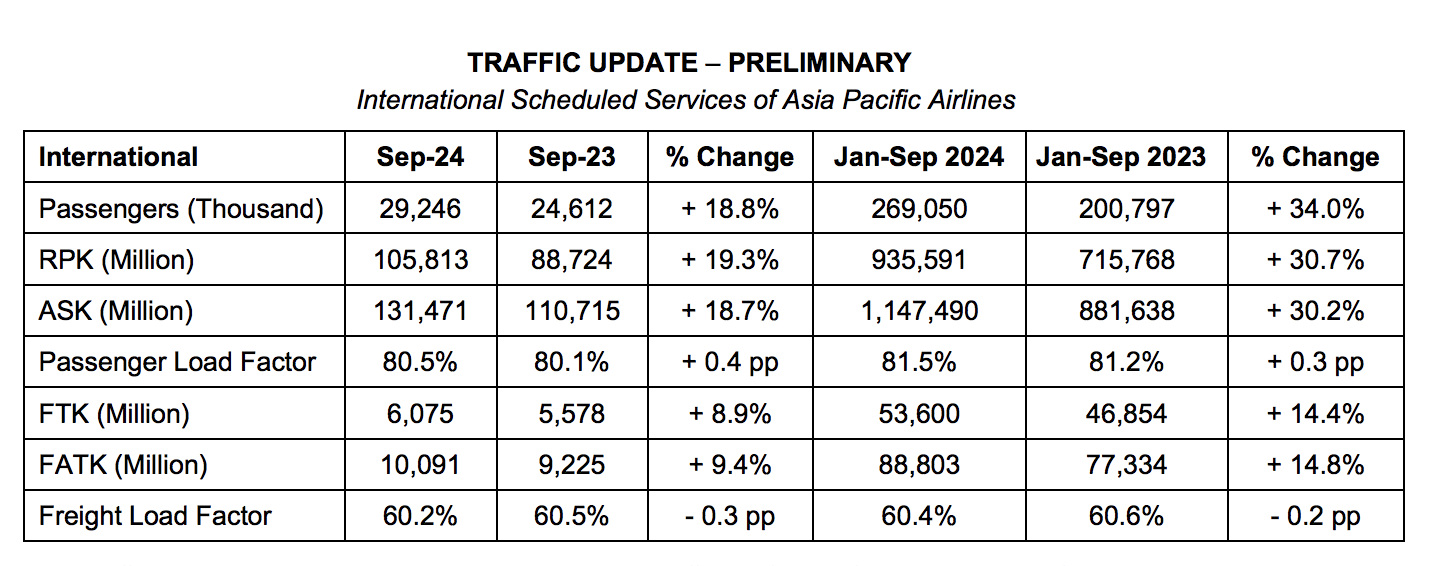Airlines in the Asia Pacific region recorded another month of cargo growth in September, as exports remained resilient despite a general manufacturing slowdown.
Traffic figures released by the Kuala Lumpur-based Association of Asia Pacific Airlines (AAPA) showed that international air cargo demand — measured in freight tonne-kilometres (FTK) — saw an 8.9% year-on-year growth in September.
After accounting for a 9.4% increase in offered freight capacity, the average international freight load factor declined marginally by 0.3 percentage points to 60.2% for the month.
September's air freight growth follows a 12.2% year-on-year increase in August and a 12.3% year-on-year growth in July.
Air cargo volumes were up 16.4% year-on-year in June and also increased 17.9% year-on-year in May.
"Air cargo demand remained resilient heading into the year-end festive season despite a slowdown in the wider global manufacturing sector," AAPA said in a statement.

[Source: AAPA]
Overall, during the first nine months of the year, Asia Pacific airlines recorded an international air cargo demand that was 14% higher than during the same period last year.
"Air cargo markets continued to expand, driven by the increases in export volumes from key manufacturing economies in Asia, including China, India, Japan and South Korea," said Subhas Menon, director general of AAPA.
Looking ahead, Menon signalled an optimistic outlook for the air cargo sector — although warning of risks from persisting supply chain disruptions.
"The global economy is expected to grow by 3.2% this year and in 2025, supporting expansion in both travel and air cargo markets. However, this may be undermined by uncertainties stemming from increasing geopolitical risks and rising trade protectionism," he said.
"Although the overall decline in jet fuel prices this year has helped to moderate rising costs, airlines continue to face challenges in fleet renewal and network growth due to ongoing supply chain disruptions and aircraft delivery delays," the AAPA chief added.